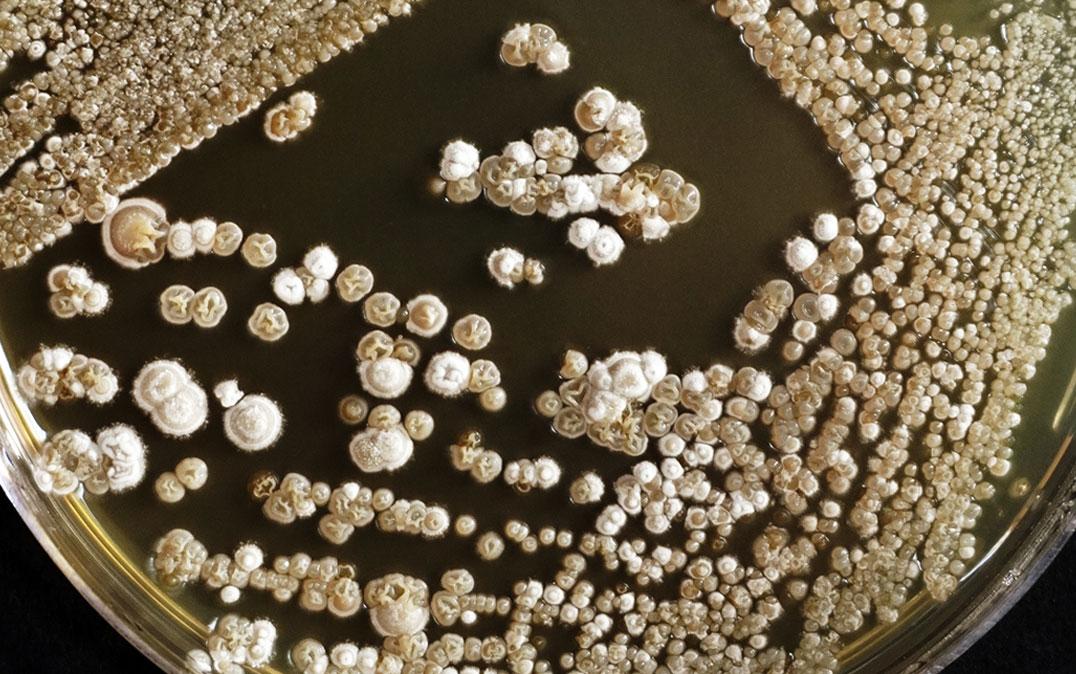Research News
Microscopic Syringes for Stressed Out Strep
 Image by AjayTvm/Shutterstock
Image by AjayTvm/Shutterstock
Researchers from the University of Tsukuba find that Streptomyces phage tail-like particles are located intracellularly, unlike other contractile injections systems, and protect the bacterium against osmotic stress
Tsukuba, Japan—Everyone can use a little stress relief, even bacteria. Now, researchers from Japan have found that a bacterial nanomachine with an unusual cellular location can protect cells from stressful environments.
In a study published recently in mSphere, researchers from the University of Tsukuba have revealed that a protein complex related to phage tail-like secretion systems is expressed intracellularly in a model Gram-positive organism and protects it from osmotic stress.
Many types of bacteria contain genes encoding phage tail-like nanomachines called contractile injection systems (CISs). These systems are essentially little syringes that the bacteria produce and release into their environment to contact other cells and inject their contents.
"CIS-related gene clusters are highly conserved in Gram-positive actinomycetes such as Streptomyces," says lead author of the study Professor Toshiki Nagakubo. "Some strains encode CISs known as Streptomyces phage tail-like particles (SLPs) that appear to provide an advantage under competitive growth conditions, but it remains unclear how they do this."
To determine how these SLPs work, the researchers investigated where SLP proteins are expressed in Streptomyces lividans, a model organism of filamentous Gram-positive bacteria with highly conserved CIS-related gene clusters. They also took a comprehensive look at the proteins that SLPs interact with.
"The results were very unexpected," explains Professor Nagakubo. "Unlike standard CISs, which are released by cells into the extracellular environment, the S. lividans SLP is expressed exclusively inside the cell."
Deleting the genes encoding the SLP resulted in increased vulnerability to osmotic stress, which is an imbalance in electrolyte concentrations inside and outside of the cell. In addition, the SLP proteins appeared to interact with cellular systems involved in cell wall synthesis and protein translation.
"Our findings suggest that SLPs are directly or indirectly associated with a protein interaction network within the cytoplasm of S. lividans, and that SLP loss ultimately affects the susceptibility of the bacterium to certain stress conditions," says Professor Nagakubo.
Given the unique intracellular localization of SLPs, it appears that they represent a new class of phage tail-like nanostructures that are produced by Gram-positive bacteria and are distinct from known types of bacterial CISs. These SLPs appear to confer resistance against osmotic stress, which could increase S. lividans survival and improve its ability to survive in densely populated microbial communities in natural environments such as soil.
###
Nagakubo was supported by a Grant-in-Aid for Scientific Research from the Japanese Society for the Promotion of Science (19K15726 and 20J01208). This research was supported in part by a grant-in-aid from Amano Enzyme Inc. (to H. O. and S. A.) and the Japan Science and Technology Agency (to N. N.; ERATO project JPMJER1502). M. T. was supported by the Suntory Rising Stars Encouragement Program in Life Sciences (SunRiSE).
Original Paper
- Title of original paper:
- Intracellular phage tail-like nanostructures affect susceptibility of Streptomyces lividans to osmotic stress
- Journal:
- mSphere
- DOI:
- 10.1128/msphere.00114-23
Correspondence
Assistant Professor NAGAKUBO Toshiki
Institute of Life and Environmental Sciences, University of Tsukuba
Related Link
Institute of Life and Environmental Sciences




